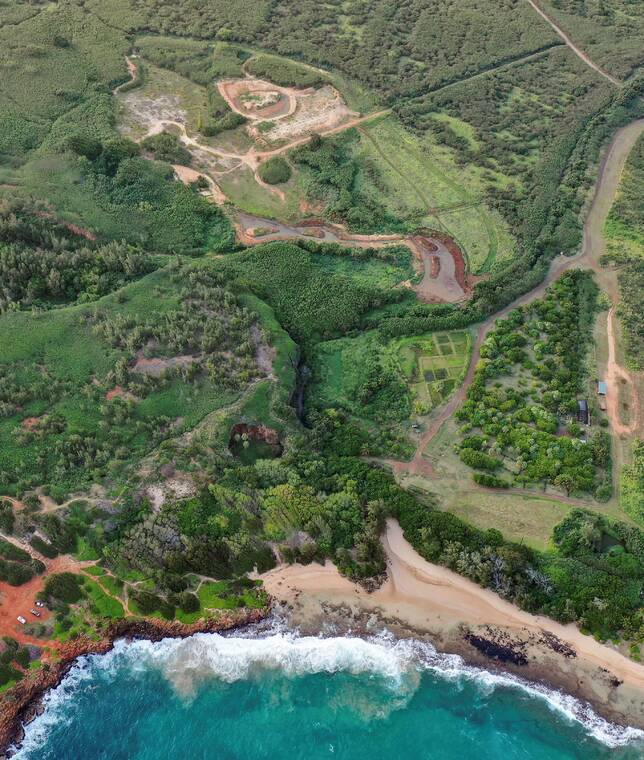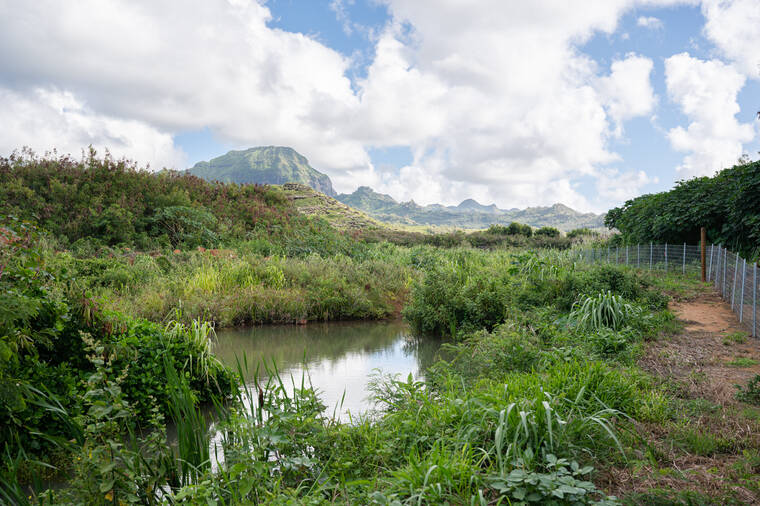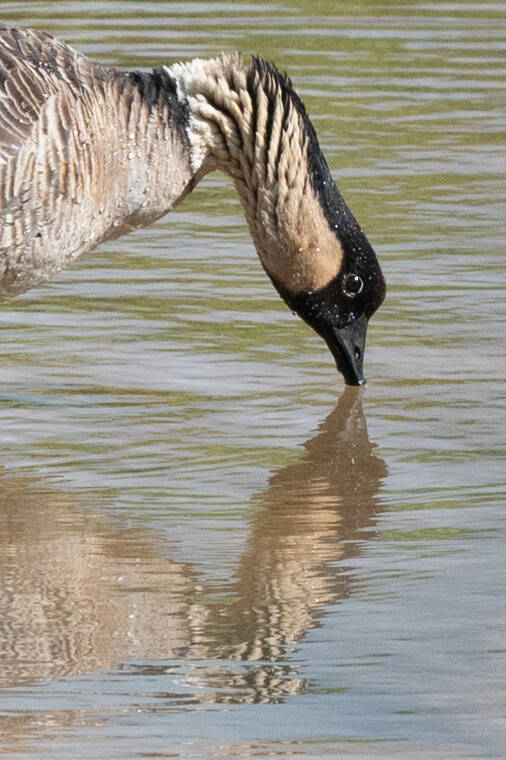PO‘IPU — Endangered waterbirds are flocking to the island’s South Shore, following ongoing wetlands-restoration efforts at Makauwahi Cave Reserve.
The reintroduction of native flora to the site is not new. Over 10,000 specimens have been planted since 1999, with another 4,000 on the way, using local fossil records to determine appropriate selections.
But cave reserve personnel’s work in wetlands and the animals they attract took off during the coronavirus pandemic, setting the stage for more wildlife conservation and management initiatives in the years to come.
“All of these endangered species are common fossils in this cave. I can’t stress that enough,” said Dr. David Burney, who manages Makauwahi Cave Reserve with fellow ecologist Lida Pigott Burney.
The married couple use fossil records to inform present-day conservation and restoration initiatives throughout the world, including Madagascar and Rodrigues Island, near Mauritius in the southwestern Indian Ocean.
Burney sees “huge irony” in the reserve’s management of rare living birds, whose ancestors filled the skies above Kaua‘i for millennia, and whose remains now fill the earth below.
“That’s the difference between our site and any other place you might come up with in Hawai‘i,” he explained. “We have them both as historical evidence on the site and we also are managing for them at present and, of course, into the future. So we feel great attachment to these birds.”
The reserve’s birds include threatened nene (Branta sandvicensis) and endangered Koloa duck (Anas wyvilliana); Hawaiian stilt (Himantopus mexicanus knudseni); Hawaiian moorhen (Gallinula chloropus sanvicensis); and Hawaiian coot (Fulica alai). Nearly all have begun breeding in wetlands established within the past two years, in an abandoned limestone quarry set back from the reserve’s public visiting areas.
The decision to convert the quarry stemmed from earlier successes when native flora and fauna were encouraged to reclaim two acres of disused taro plots. Inspired by the birds’ quick and favorable response to small-scale habitat restoration, the reserve turned its gaze upon the larger quarry in 2019, when they began replanting the quarry’s upland areas in collaboration with property owner Grove Farm Co.
“It was kind of a moonscape. There was a lot of just bare, dusty rock areas that were not growing much of anything except a few non-native weeds that had found their way in,” Burney said.
Burney, who collects historical maps and images of the cave reserve area, immediately saw an opportunity to do more.
“We said we’d like to raise some funds to restore the wetlands, to scoop the mud out of them and build water-control structures to prevent erosion and so forth.”
The Wildlife Conservation Society became the project’s chief backer just as the pandemic struck in spring 2020. But the cave reserve kept the restoration effort underway through a partnership with the county, which offered paid and insured internships to unemployed residents through educational work programs funded by the federal Coronavirus Aid, Relief, and Economic Security (CARES) Act.
The quarry now features three distinct wetlands bordered by stream banks filled with native species including ‘ahu‘awa (Mariscus javanicus), certain hibiscus species and other plants. The entire site has been fenced in as well, to keep destructive animals like pigs and dogs out.
Most recently, Makauwahi Cave Reserve has received a small federal grant through the North American Wetlands Conservation Act. The NAWCA Small Grant, announced by conservation group Pacific Birds earlier this month, will help improve and maintain the reserve’s restoration of 12 wetland acres and 10 upland acres.
Burney said the birds’ behavior within the new avian sanctuary is heartening.
“These native wetland birds are breeding in the site now. We’ve seen juveniles present in nesting activity. That’s really exciting,” he said.
Going forward, the reserve hopes to perform similar restoration work for nearby endangered Newall’s shearwaters and petrels, in collaboration with Kaua‘i-based group Archipelago Research and Conservation.
•••
Scott Yunker, general assignment reporter, can be reached at 245-0437 or syunker@thegardenisland.com.






Good to know the local cat population will be well fed.
This is so wonderful…We live in Poipu and enjoy seeing [and hearing!!! ] the Nene geese flying overhead. We saw a definite decrease of the Nene when they had that big filming production at Mahalepeu [ some years back] but now the Nene have returned in bigger numbers. We also love to see the Kolea’s return each year from Alaska!!!. Thank you for your dedication and love for these birds!!
Truly a special place and a well-thought restoration, congratulations!
For those who would like to know the Hawaiian names of these native Hawaiian birds (this is, after all, Hawaiʻi), they are: Nēnē (Branta sandvicensis); Koloa ( endangered Hawaiian duck, Anas wyvilliana); Aeʻo (Hawaiian stilt, Himantopus mexicanus knudseni); ʻAlae (Hawaiian coot, Fulica alai); and ʻAlae kea (Hawaiian moorhen, Gallinula chloropus sanvicensis).
Mahalo for the Makauwahi crew putting up fencing to protect these birds; as Sam G so facetiously intimates, let’s hope those responsible for alien predators (dogs, cats, etc) do their part to contribute to this effort to preserve Hawaiʻi.